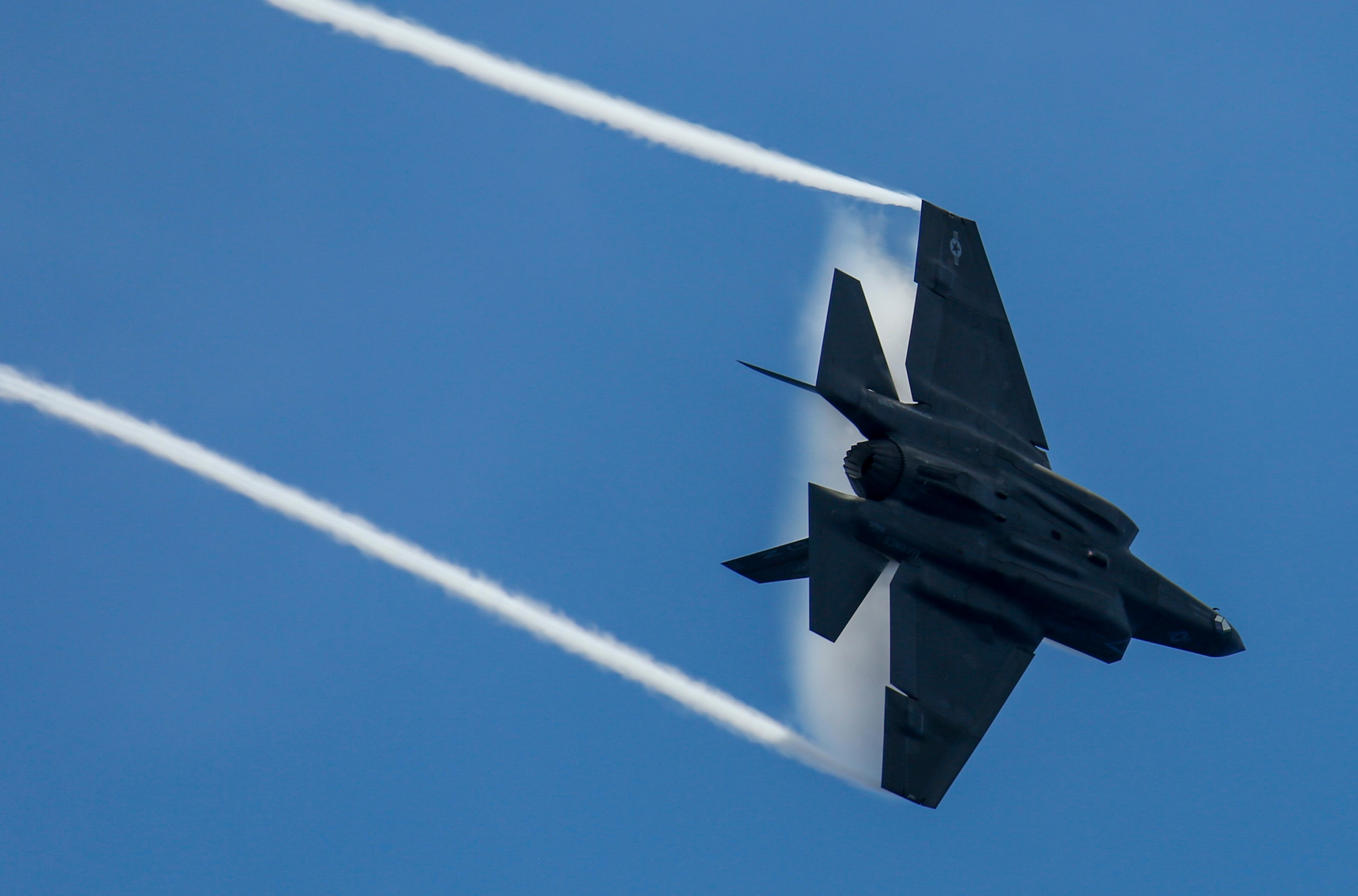
ABOARD AIRCRAFT CARRIER USS ABRAHAM LINCOLN, OFF THE COAST OF HAWAII – When aircraft carrier USS Abraham Lincoln (CVN-72) pulls into Naval Air Station North Island on Thursday, it will cap off a busy deployment to the Western Pacific.
Lincoln’s deployment saw the carrier largely operating in U.S. 7th Fleet, where it had the chance to drill with both Japan and the Philippines ahead of the biennial Rim of the Pacific 2022 exercise in Hawaii.
It’s the second consecutive high operational tempo aircraft carrier deployment to WESTPAC, as the U.S. Navy increases its emphasis on operating in the region to counter China.
“Our activities into the South China Sea as well as East China Sea were important to send a signal to China, North Korea, Russia of our commitment to the region, as well as our willingness to fly, sail, or operate wherever international law allows,” Rear Adm. J.T. Anderson, the commander of Carrier Strike Group Three, told USNI news in a recent interview.
While the carrier participated in a wide range of exercises, the deployment also marked the first U.S. Marine Corps F-35C Lightning II Joint Strike Fighter squadron deployment on an aircraft carrier and the second for the CMV-22B Osprey.
Capt. Amy Bauernschmidt, Lincoln’s commanding officer, told USNI News that the crew applied many of the takeaways from USS Carl Vinson‘s (CVN-70) recent deployment in the region to Lincoln’s time in WESTPAC.
“We took onboard a lot of their lessons about … where to base, and how to operate. We did build upon those lessons and learned a few of our own. We were fairly fortunate in that while we covered a vast amount of space in 7th fleet – some days it was a long flight for the CODSPREY – but we were able to remain mostly based out of one location for most of the deployment, which at least facilitated the flow of people and parts to one location,” Bauernschmidt said.
Dynamic Environment
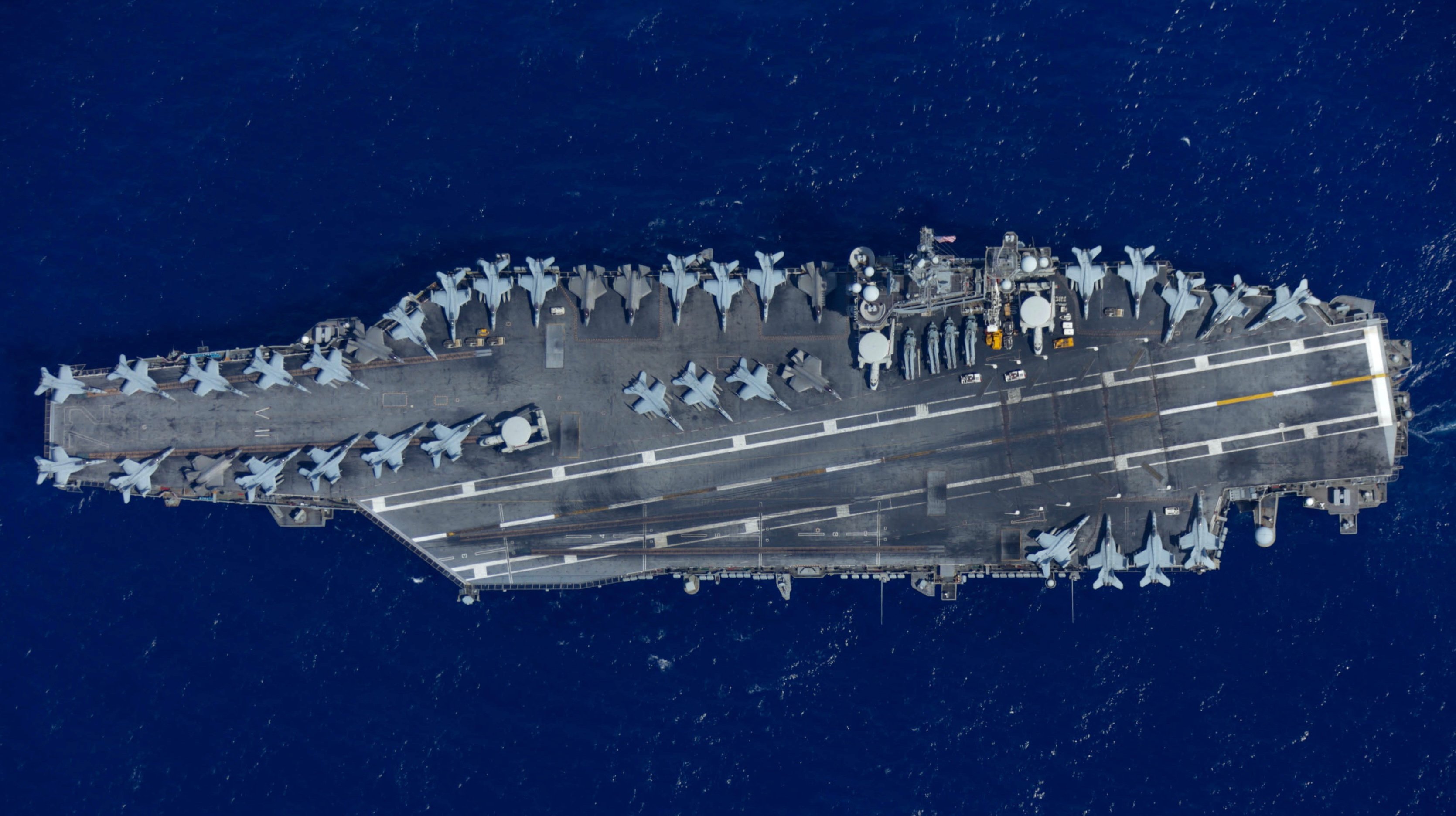
The early days of Lincoln’s deployment saw the carrier operating in the South China Sea – including amid People’s Liberation Army Air Force incursions into Taiwan’s air defense identification zone – and the Philippine Sea.
Anderson echoed remarks Vinson crew members made to USNI News during a trip earlier this year to Vinson at the tail-end of its deployment, in which sailors described a more dynamic environment in U.S. 7th Fleet compared to deployments over the last two decades in U.S. Central Command.
“We spent a lot of time maneuvering around not only the Philippine Sea, but also in the South China Sea and well as the East China Sea. And the dynamic maneuver wasn’t just exclusively maneuvering around to avoid certain things, but it was also that that’s our best way of being able to compete in that space, as well as provide a strong presence throughout the region,” Anderson said.
“If we were to just simply maintain our location in one general location, I don’t think we were necessarily doing our job, right, in terms of providing a sustained presence throughout the region.”
Bauernschmidt acknowledged the difference between operations in U.S. 7th Fleet versus U.S. 5th Fleet.
“I would say a vast majority of folks that have deployed in the Navy got very comfortable and used to 5th Fleet operations and this is obviously not 5th Fleet operations. And so it is a much larger area than we would typically operate in and … it’s not just about one entity. It’s about China, Russia, [North] Korea. It’s about multiple different actors and being able to respond to any of those,” she told USNI News.
“Because it’s a large area of operations, being able to strategically place yourself to answer whatever mission we’re called upon is very important.”
Because of the size of the Indo-Pacific region, Bauernschmidt said she had to change how she thought about the carrier’s operations.
“I personally also had to think a little differently about each and every night what the sea space looked like, what we were being tasked with, what we were being asked to accomplish, or to just think ahead about where we may want to position ourselves in the event we were tasked with a different mission,” she said.
“Because unlike operations in the 5th Fleet that you can get where you needed to be in a half a day, in a fairly short amount of time, we have a lot more sea space to cover. And so being able to think strategically, position yourself where you need to be, understand the constraints and the restraints of ourselves, our aircraft, and other forces was important.”
Lessons Learned from Vinson
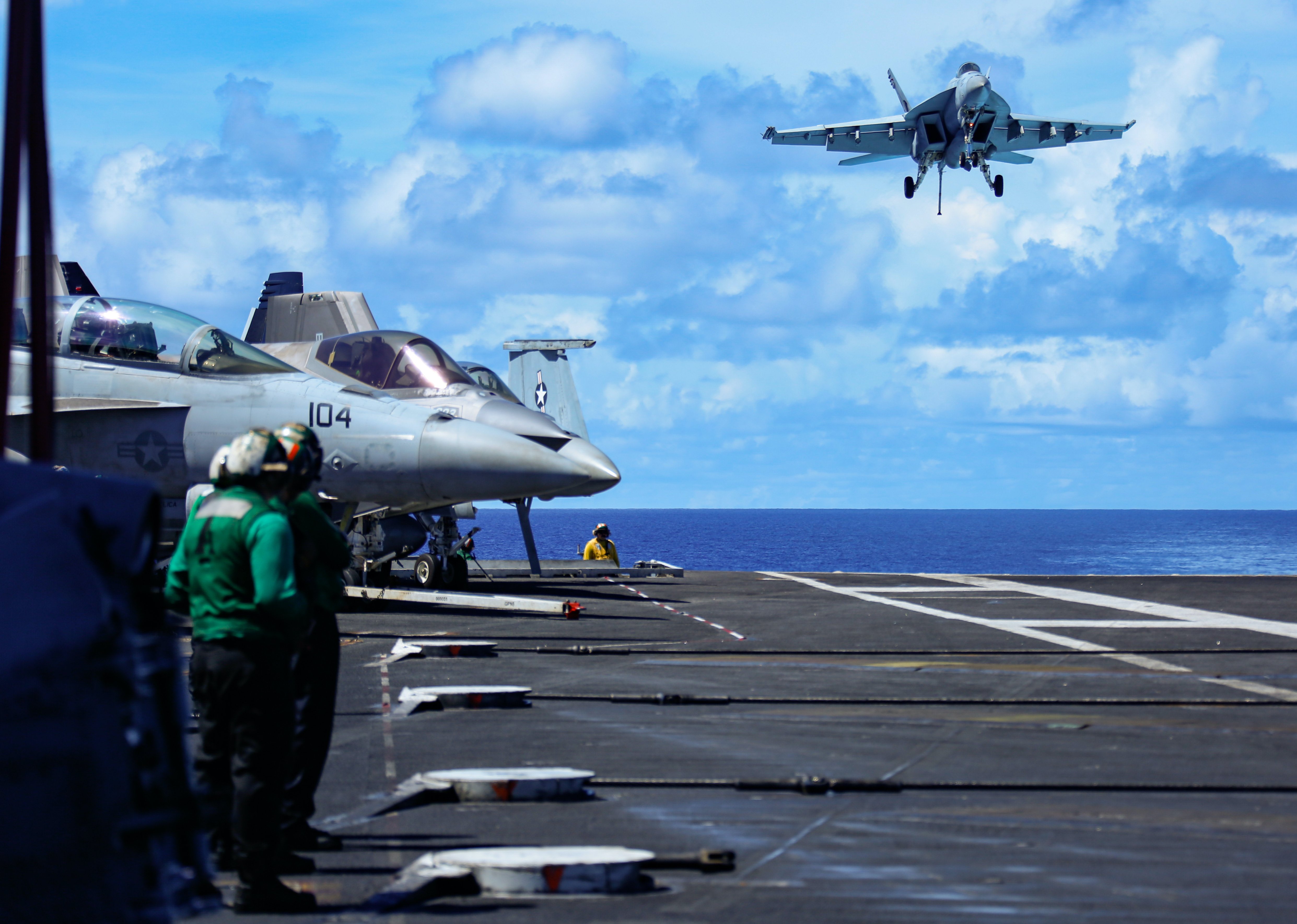
Lincoln’s deployment to the western Pacific followed a similar one last year by Vinson, which sent the first U.S. Navy F-35C squadron and CMV-22B Osprey squadron out to sea. Lincoln deployed with 10 Marine Corps F-35Cs that make up the “Black Knights” of Marine Strike Fighter Squadron (VMFA) 314 out of Marine Corps Air Station Miramar, Calif.
Ahead of the deployment, Bauernschmidt said Lincoln had the authority to install a double-decker mezzanine at the back of the hangar bay.
“What that allowed us to do was get some of the material that was normally in hangar bay 3 up into that mezzanine,” she said.
“We also took a good look at all of the support equipment and really tried to optimize where maybe we had duplicates, or we had the ability to truly ensure that the support equipment for the aircraft that we had was the right quantity, the right number, and the right ability,” Bauernschmidt added.
Instead of basing out of the U.S. Air Force’s Kadena Air Base on Okinawa, like Vinson’s CMV-22B Osprey detachment, Lincoln’s detachment was based out of Marine Corps Air Station Futenma. This helped with parts and maintenance because the U.S. Marine Corps’s MV-22B Ospreys were also at Futenma.
“It is always helpful when there’s extra bodies, extra parts. So there was a little bit easier flow because there was already an established flow for most of their parts,” Bauernschmidt said.
Cmdr. Daniel Hutton, an aircraft intermediate maintenance department officer aboard Lincoln, said the carrier’s crew used takeaways from the Vinson deployment to tweak what equipment Lincoln brought. This allowed the crew to make more space in the hangar bay and be more strategic with what equipment it needed or did not need. As a result, the crew placed more gear in hangar bay 3, which made for more space in the middle of the carrier and in the forward part of the ship.
“Being the second air wing ship team to go out to sea with that type of aircraft, there’s a constant learning process that takes place between the ship, the supporting entities ashore, and then being able to adjust and take into account what things break,” Hutton told USNI News.
Hutton said they will continue to make tweaks depending on what happens throughout the deployment.
Since Vinson‘s crew had the chance to test out the deck density aboard the carrier with the Navy F-35Cs and the CMV-22B Ospreys, Lincoln could take those lessons and alter what they brought to sea. As a result, Bauernschmidt said Lincoln decreased its deck density.
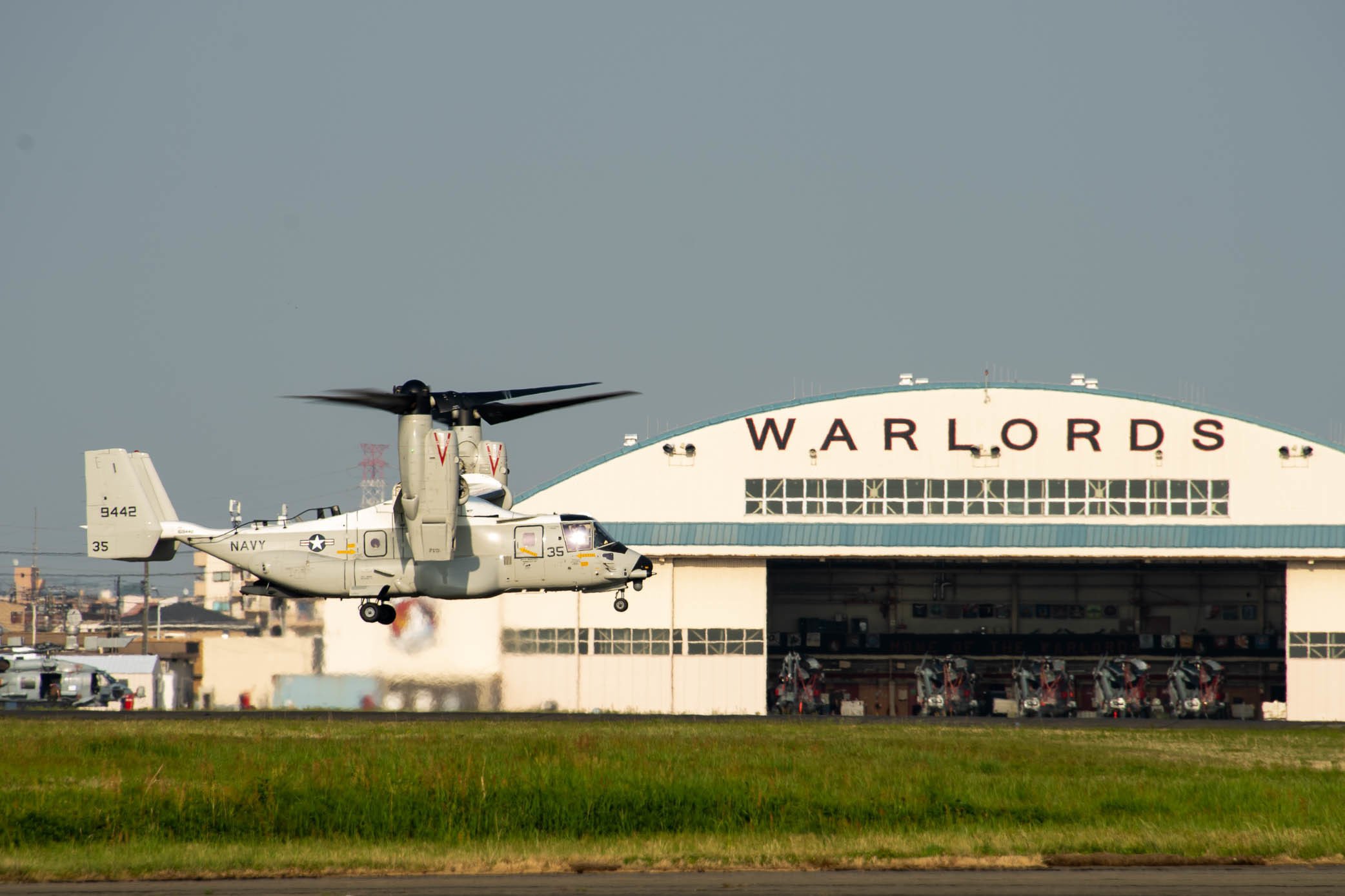
“Because we had a lot of Vinson’s lessons learned, we were able to sit down and take a very thoughtful look at how we were utilizing space in the hangar bay to try to ensure that we didn’t have anything we didn’t need, but we did have everything that we were going to need so that it opened up extra space for aircraft and a little bit of extra maneuver space to maneuver them around,” she said.
“And we got our deck density down quite a bit from where Vinson was and into a pretty good place. And then we were still able to provide a little bit more feedback for follow on carriers so that they can learn from what we kind of figured out as well.”
Bauernschmidt said she also took advice from Vinson‘s commanding officer about how to perform replenishments at sea to maximize the carrier’s ability to respond to missions if necessary.
“He talked about some of the pluses and minuses with different locations – impacts of sea space, or how flight operations worked. We try to ensure that we were postured very well to be able to react to anything that we needed to react, like we do every day,” Bauernschmidt said. “But when you’re alongside another ship, we were very careful about planning it so that we were – several times we launched aircraft while we were alongside replenishing to be able to respond as necessary and then we were able to continue about the mission.”
F-35C Operations
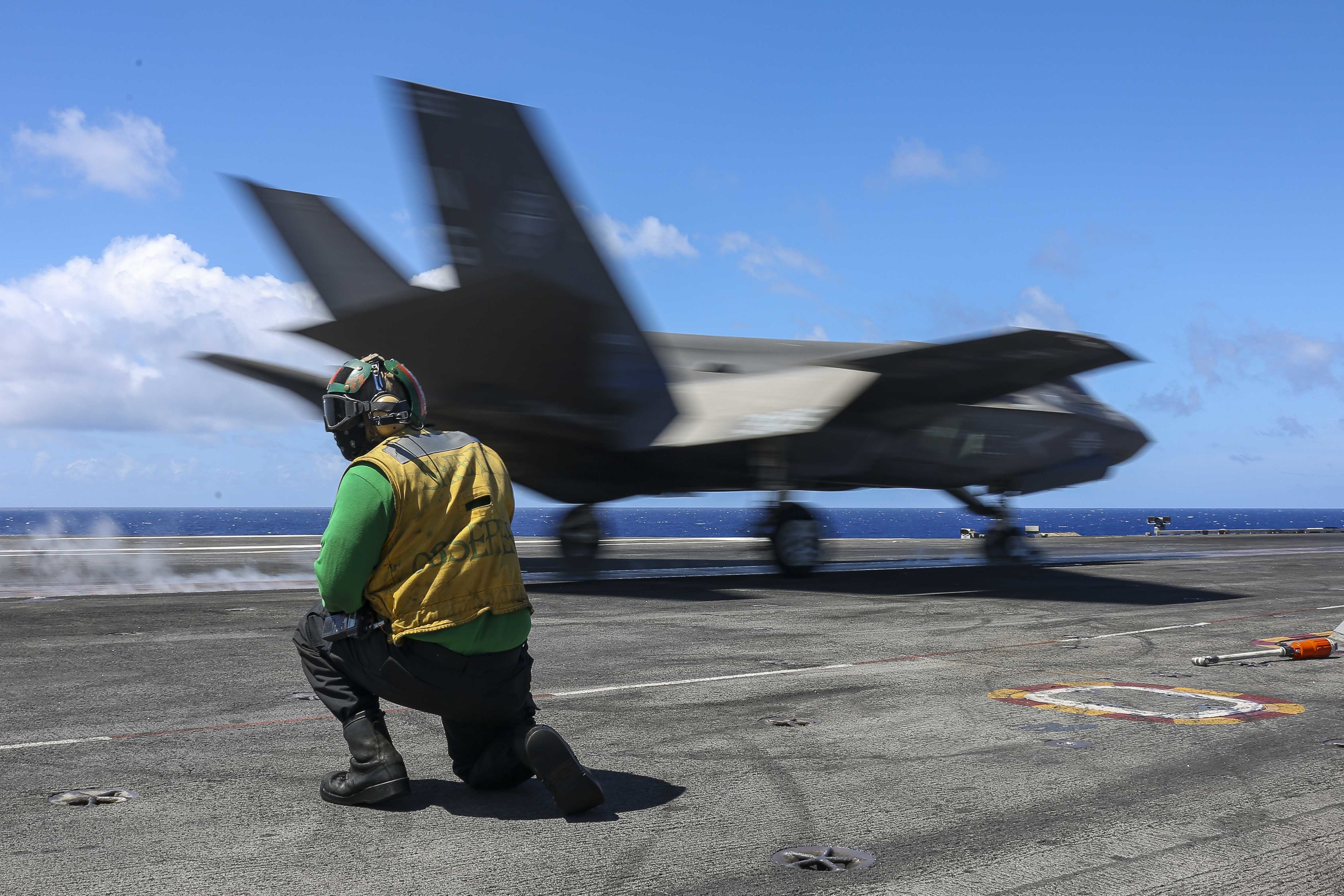
After employing the Navy and Marine Corps F-35Cs at sea, officials aboard both Vinson and Lincoln say they want more of the aircraft operating within a carrier strike group.
Anderson, when asked why he would like more F-35Cs, pointed to the fighter’s sensing capabilities. Both Bauernschmidt and Anderson described “seamless” integration of the F-35Cs into the carrier air wing.
“It’s the tremendous capability that the aircraft provides from an ability to generate information, the sensors that it has onboard, as well as its ability to distribute that information, not just to other aircraft but to the rest of the force,” Anderson told USNI News.
“It’s a testament to the platform and the folks that fly it too that it can integrate so well in with the rest of the air wing. We don’t have to do unique things with the schedule, the cycle lengths, etc. in order to accommodate it.”
Despite concerns ahead of the first F-35C deployments, Bauernschmidt said at-sea operations disproved some of those worries.
“I think like any new platform that’s introduced, there’s a little bit of angst about how it’s going to go. And I think what ended up happening when we got them was the realization that it was again a fairly seamless integration, regardless of whether it was Marine Corps or Navy,” she said.
“But I think in terms of the noise and some of the things they were concerned about from whether it was a deck density standpoint, or parts availability, or maintenance that they were going to be required to do, I think there were a lot more concerns that were fairly unfounded once, you know, now that we’ve gotten through this deployment [and] we’ve been able to see and operate with them.”





